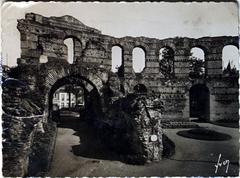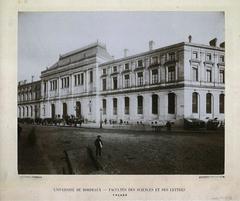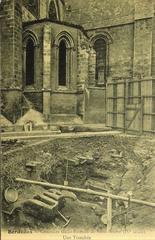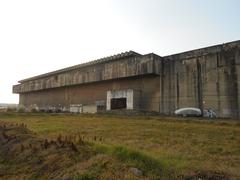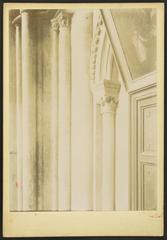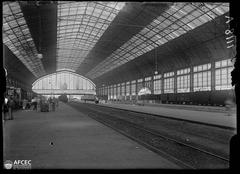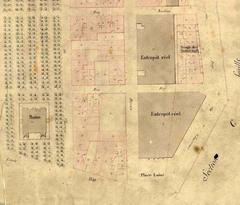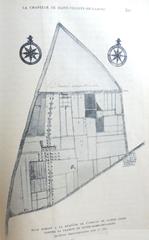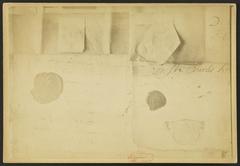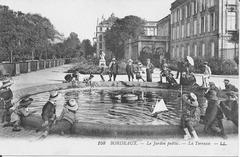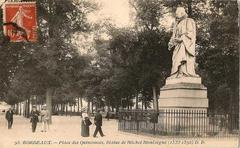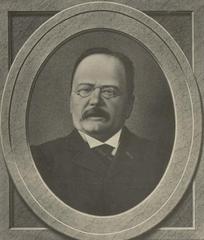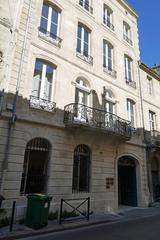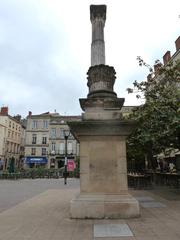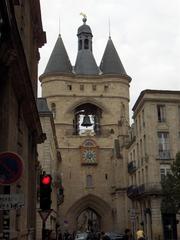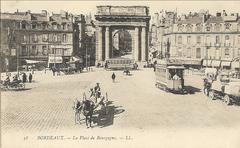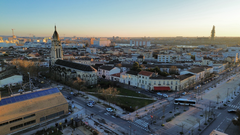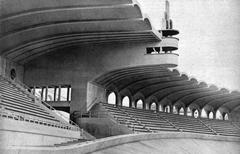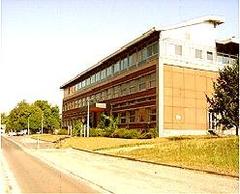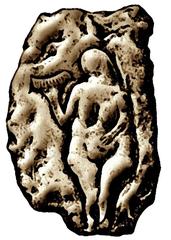
Pont d’Aquitaine Visiting Hours, Tickets, and Travel Guide: Bordeaux Historical Sites
Date: 04/07/2025
Introduction
The Pont d’Aquitaine is one of Bordeaux’s most recognizable structures, a red-pyloned suspension bridge spanning the Garonne River. As both a vital transportation artery and a feat of 20th-century engineering, it connects the heart of Bordeaux to its northern suburbs, facilitating the daily movement of over 110,000 vehicles. Beyond its practical function, the bridge offers panoramic city views and stands near several of Bordeaux’s most celebrated historical sites, including the UNESCO-listed Port de la Lune and the innovative Bacalan district.
This comprehensive guide covers the history, architecture, visiting hours, access details, maintenance updates, and nearby attractions, ensuring travelers and enthusiasts can fully appreciate the Pont d’Aquitaine’s significance and plan their visit effectively. (Wikipedia, Sud Ouest, Bordeaux Tourism, DIR Atlantique)
Table of Contents
- Introduction
- Historical Overview
- Design and Engineering
- Bridge Access, Visiting Hours, and Practical Tips
- Maintenance and Closures
- Nearby Attractions and Suggested Itineraries
- Frequently Asked Questions (FAQ)
- Conclusion
- References
Historical Overview
Origins and Urban Necessity
The need for a new bridge over the Garonne in Bordeaux became apparent as the city’s population and economic importance grew. The original Pont de Pierre, completed in 1822, soon proved insufficient for increasing traffic. Multiple bridge projects were considered in the late 19th and early 20th centuries, with a transporter bridge begun in 1909 but halted due to World War I and later technological changes.
After World War II, Bordeaux’s rapid expansion and heightened traffic prompted renewed efforts. By the 1950s, planners decided on a modern suspension bridge north of the city, culminating in the Pont d’Aquitaine project, which began construction in 1960 and was inaugurated in 1967. (Wikipedia, Sud Ouest)
Design and Engineering
Structural Features
The Pont d’Aquitaine exemplifies advanced suspension bridge design. Its main suspended span stretches 394 meters, supported by two 103-meter-high red steel pylons, with a clearance of 53 meters to allow maritime passage beneath. The left bank is connected to the structure by a 21-span prestressed concrete viaduct, integrating the bridge into the urban fabric of Bacalan.
The bridge’s deck, originally equipped for four lanes, was expanded over the years to accommodate six lanes and wide cycle paths. The distinctive red color of the pylons and slender deck profile have become visual identifiers for Bordeaux, drawing comparisons to the Golden Gate Bridge in San Francisco. (Bordeaux Tourism, Baudin Chateauneuf PDF)
Engineering Innovations
The bridge’s design incorporates deep foundations on the soft left-bank marshes, aerodynamic deck shapes to resist wind, and robust cable anchoring systems for stability. It was built to meet the predicted traffic demands of Bordeaux’s growing ring road network. (Bordeaux Tourism)
Bridge Access, Visiting Hours, and Practical Tips
Access Policies
The Pont d’Aquitaine serves as a public motorway with dedicated cycle paths. There are no entrance fees or ticket requirements for cyclists or vehicles. However, pedestrian access is strictly prohibited for safety reasons—only cyclists may use the bridge’s separated lanes, and these may be temporarily closed during maintenance. (toobordeaux.fr, actu.fr)
- Visiting hours: Open to vehicles and cyclists 24/7 except during scheduled closures.
- Pedestrian access: Not permitted.
- Cycle lanes: Available, but check for maintenance updates.
- Best time to visit: Early mornings, late afternoons, and weekends for lighter traffic and ideal lighting for photography.
Getting There
The bridge is located north of central Bordeaux, connecting the Bacalan district (left bank) with Lormont (right bank), and is easily accessed via the A630 ring road (part of the European route E5). Public buses serve both ends of the bridge, with nearby tram stops providing additional connectivity. Park in Bacalan or Lormont and approach recommended vantage points on foot or by bike. (trek.zone)
Safety and Accessibility
Due to bridge height and exposure, cyclists should be prepared for wind and weather. The bridge is not well-suited for people with reduced mobility, as it lacks pedestrian paths and rest areas. There is no parking directly on the bridge. Amenities are available in adjacent neighborhoods.
Maintenance and Closures
Scheduled Maintenance
Major and routine maintenance is scheduled throughout the year, with closures typically overnight or on weekends to minimize disruption. These affect all traffic, including vehicles, cyclists, and cycle lanes. Key closures in 2025 include several dates in April, May, and June. Always consult the official closure calendar before planning your crossing. (DIR Atlantique, Sud Ouest)
- Alternative routes: During closures, use the Pont François Mitterrand for vehicles, cyclists, and pedestrians.
- Real-time updates: DIR Atlantique, Bison Futé, @BordeauxTrafic Twitter account
Maintenance Scope
Works include structural inspections, resurfacing, painting, lighting upgrades, and cable and expansion joint maintenance. These efforts ensure long-term resilience and safety for all users.
Nearby Attractions and Suggested Itineraries
- Port de la Lune: Bordeaux’s historic harbor (UNESCO World Heritage Site).
- Cité du Vin: Renowned wine museum and cultural destination.
- Bacalan District: Trendy area with modern art, dining, and the Les Vivres de l’Art hub.
- Parc aux Angéliques: Riverside park with excellent bridge views.
- Château de Lormont: Historic castle and gardens on the right bank.
- Nouveau Stade de Bordeaux: Modern sports and events venue.
Pair a visit to the bridge with a walk or cycle along the Garonne, a tour of Bordeaux’s old town, or an exploration of local museums and parks. (thecrazytourist.com)
Frequently Asked Questions (FAQ)
Q: Can I walk across the Pont d’Aquitaine?
A: No, pedestrian access is prohibited due to safety regulations.
Q: Are there tickets or fees for crossing?
A: No, it is a public roadway with free access for vehicles and cyclists.
Q: When is the bridge closed?
A: Scheduled closures for maintenance occur regularly; check DIR Atlantique for updates.
Q: Is the bridge accessible for people with reduced mobility?
A: The bridge lacks pedestrian pathways and dedicated accessibility features.
Q: Where are the best photo spots?
A: Quai de Bacalan, Parc de l’Ermitage Sainte-Catherine (Lormont), and Les Vivres de l’Art offer exceptional views.
Q: Are guided tours available?
A: There are no official bridge tours, but local city tours may include viewpoints featuring the Pont d’Aquitaine.
Conclusion
The Pont d’Aquitaine is more than a transport link—it is a landmark representing Bordeaux’s postwar growth, engineering prowess, and urban dynamism. While pedestrians cannot cross, cyclists and motorists enjoy unique vantage points of the city and river, and nearby parks and districts provide exceptional views and cultural experiences. With ongoing maintenance ensuring its longevity, the bridge remains an essential and inspiring part of Bordeaux’s landscape.
For the most rewarding experience, plan your visit around scheduled closures, explore nearby historical sites, and check official resources for real-time updates. Capture the bridge’s beauty from recommended viewpoints and immerse yourself in the vibrant culture of Bordeaux.
References and External Links
- Pont d’Aquitaine (Wikipedia)
- Pont d’Aquitaine: Over 50 Years Overlooking the Garonne (Sud Ouest)
- Pont d’Aquitaine: Structure and Engineering (Bordeaux Tourism)
- DIR Atlantique: Maintenance and Closures
- Pont d’Aquitaine Visitor Guide (toobordeaux.fr)
- Traffic and Maintenance Updates (Sud Ouest)


